8 Rights: The Noble Eightfold Path — the Heart of the Buddha’s Teaching
The Noble Eightfold Path distinguishes itself from many teachings in its positive, affirmative nature. Many spiritual teachings consist of dont’s: don’t do this, don’t do that. The Noble Eightfold Path speaks in positive, warm terms. Implied within the concept of “right” might be its opposite — “wrongs” — but Buddha taught self-empowerment, not prohibitions. He taught the Eightfold Path in his first teaching at Deer Park.
Buddha taught the “cure” to the disease of suffering as eight positive, affirmative actitvities that can help us rise out of Samsara. Buddha did not establish “can’t” dos or laws, but instead coached us on what we can (and should) do.
In other words, he did not teach “do not swear” or “do not lie.” — he suggested “right speech.” Buddha taught in much more affirmative terms. It might be easier, for example, to say “do not lie,” but Buddha taught us how to generate loving-kindness as the remedy for harsh speech. He didn’t prohibit — he coached positive change.
NOTE: The full text of The teaching at Deer Park teaching is at the end of this feature. It is short and makes a good “daily” read. In this teaching, he introduced the Four Noble Truths, the concept of the Middle Way, and the Eightfold Path.
The Disease of Suffering and the Medicine of the Noble Path
Most precious in Buddhism are the Three Jewels: Buddha, Dharma and Sangha. As practicing Buddhists — regardless of school or level of practice — we take refuge in the Three Jewels each day. The Buddha is often described with the metaphor of “the Doctor”, the Dharma as “the medicine” and the Sangha as the supporting caregivers. Underlying this concept of medicine is the Buddha’s original and core “prescription” (Dharma teaching) — the Noble Eightfold Path. This path is not as simple as we’re about to map out, but having a high level “essence” view of the entire path, in as concise a form as possible, can be very helpful to practice.

Before giving the “prescription”, Buddha first taught the Four Noble Truths, the Truth of Suffering, metaphorically, the “disease” we are treating.
“What, monks, is the truth of suffering? Birth is suffering, decay, sickness and death are suffering. To be separated from what you like is suffering. To want something and not get it is suffering. In short, the human personality, liable as it is to clinging and attachment brings suffering.” [1]
If this suffering is the disease, the prescription was the Eightfold Path. Although described alternately with the metaphor of “path” and “steps on the path” this teaching is not linear.
Not a Step-by-Step Teaching: Simultaneous Rights
“Right” might be the wrong word, an indelicate translation. It implies moral code and rules, which is not the true sense of the Eightfold Path. The word path might be slightly misleading too, because the “Eight Rights” are taken together as simultaneous and equally vital, meant to be transformative and complete. In other words, we don’t work on Right Speech first, then move on to Right Livelihood; they’re inextricably bound together. By taking them together, we bring the Dharma into our every-day lives.
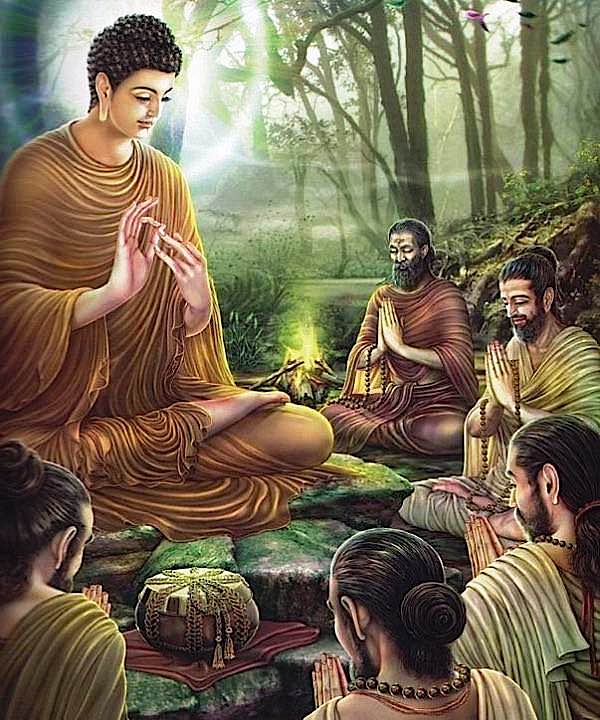
Buddha’s Word: The Eightfold Path
“This is the noble eightfold way, namely, right understanding, right intention, right speech, right action, right livelihood, right attention, right concentration, and right meditation.” — Shakyamuni Buddha at Deerpark
The word “right” (sometimes translated as “correct”) doesn’t imply there are also eight “wrongs.” There are no “thou shalt nots” in Buddhist teachings as a rule. This is an English translation of a concept that goes beyond right and wrong. It recognizes that action, in daily living, is Dharma.
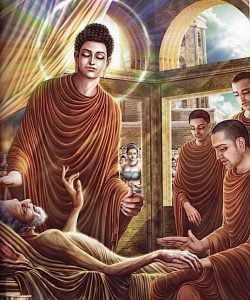
As with all Buddhist teachings, we are asked to consider, contemplate and live the teachings. We are not asked to take anything on faith — it’s about self-discovery of the truth of the Buddha’s teachings.
Just as a quick overview, here is a tight synopsis of the eight “rights” — necessarily incomplete, but containing the gist.
In summary:
- Right Understanding
- Right Intent
- Right Speech
- Right Action
- Right Livelihood
- Right Effort
- Right Mindfulness
- Right Concentration.
1. Right Understanding
Right Understanding is clear knowledge of the Four Noble Truths, encompassing the “Three Basic Facts of Existence”: Anicca (Impermanence), Anatta (Pali for “non self” or “insubstantiality”; in Sankrit Anatman) and Dukkha (suffering or unsatisfactoriness). These are big topics, and we look to the Dharma teachings and commentaries, our own teachers, our own insight meditations for guidance on “right understanding.” Without understanding the Four Noble Truths (the “diseases”) of what use is the “cure” (The Eightfold Path)?
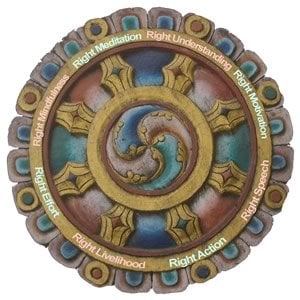
2. Right Thoughts
With clear knowledge, clear thinking follows suit. This is known as initial application (of knowledge).
Thoughts mould a person’s nature and direct their course and direction of action. Unwholesome thoughts will debase and erode a person’s character over time, while wholesome thoughts will lift him/her higher and higher up.
 In particular, Right Thoughts are:
In particular, Right Thoughts are:
- Renunciation (Nekkhamma) of worldly pleasures, and selflessness (altruism). This is opposed to insatiable desires and selfishness.
- Loving-kindness (Metta) or good will towards people, including yourself; which is opposed to hatred, ill-will, aversion, dislike, detest and spite.
- Harmlessness (Avihimsa) or compassion, as opposed to cruelty and callousness.
3. Right Speech
Verbal expression and communication need to match Right Thoughts. For instance, you are cursing and swearing, or being harsh and abusive, your thoughts will certainly match your speech, and vice versa.
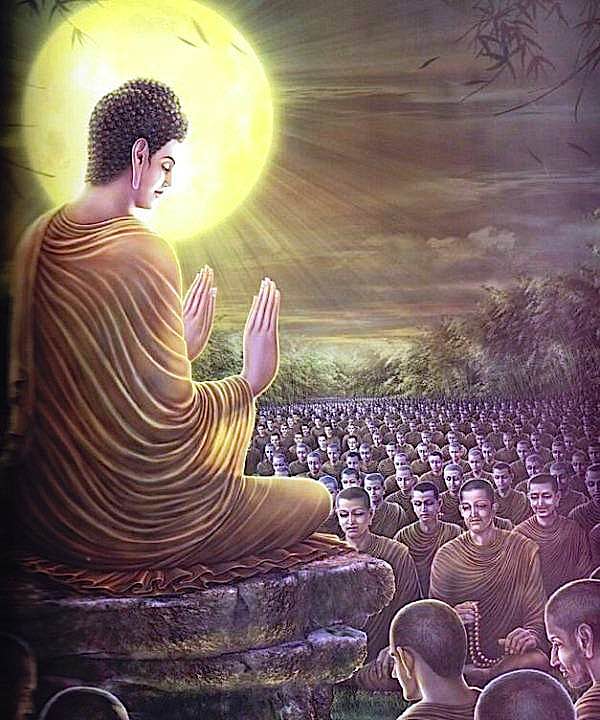
The specifics are:
- Firstly, avoid speaking lies, slander, harsh words, and indulging in frivolous chatter (gossips, idle talk etc.)
- Secondly, as mentioned earlier, a harmless mind that generates loving-kindness cannot vent with harsh speech, which first debases the speaker, then hurts the listener(s). Last but not least, what is spoken should not only be true, but also sweet and gentle. If your comment is true, but hurtful and unnecessary/unconstructive; then just keep your noble silence.
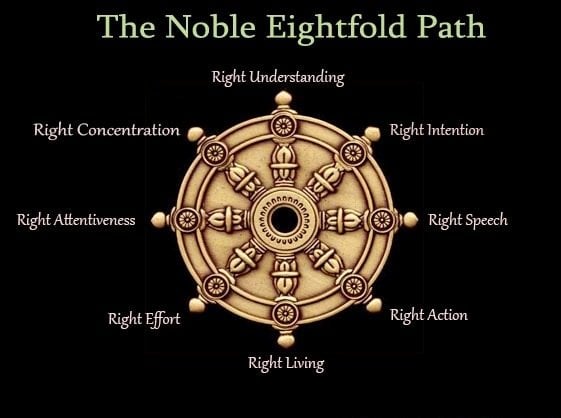
4. Right Action
With good thoughts and wholesome speech, naturally, your actions have to be compatible. In particular, abstinence from killing, stealing and sexual misconduct (rape / molestation / deception / abuse). These three unwholesome deeds are caused by craving and anger, coupled to ignorance.
With the gradual elimination of these kammic causes (evil mental / verbal / physical actions) from your mind and body, blameworthy / bad tendencies will find no outlet nor route to express themselves.
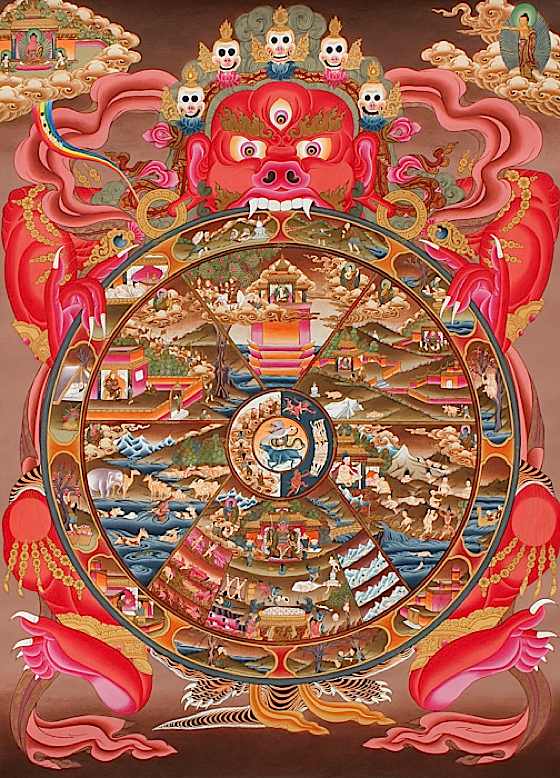
5. Right Livelihood
If you feel good about your job, it’s probably right livelihood. Do you help people? As long as you harm no one — and that would include the environment, since that impacts all beings — then it’s right livelihood. Buddha wouldn’t put things in a negative context, but it should be obvious that any attempt at purifying thoughts, words and actions would be severely hindered by five kinds of trade / business / job that clearly are NOT right livelihood:
- Weapons (arms) production
- Human slavery
- Breeding of animals for slaughter / slaughtering animals per se
- Illegal drugs (narcotics), alcohol, cigarettes and the like: producing anything known to be bad for sentient beings
- Poisons: producing poisons, pollution and other harmful substances.
Hypocritical conduct is cited as wrong livelihood for monks.
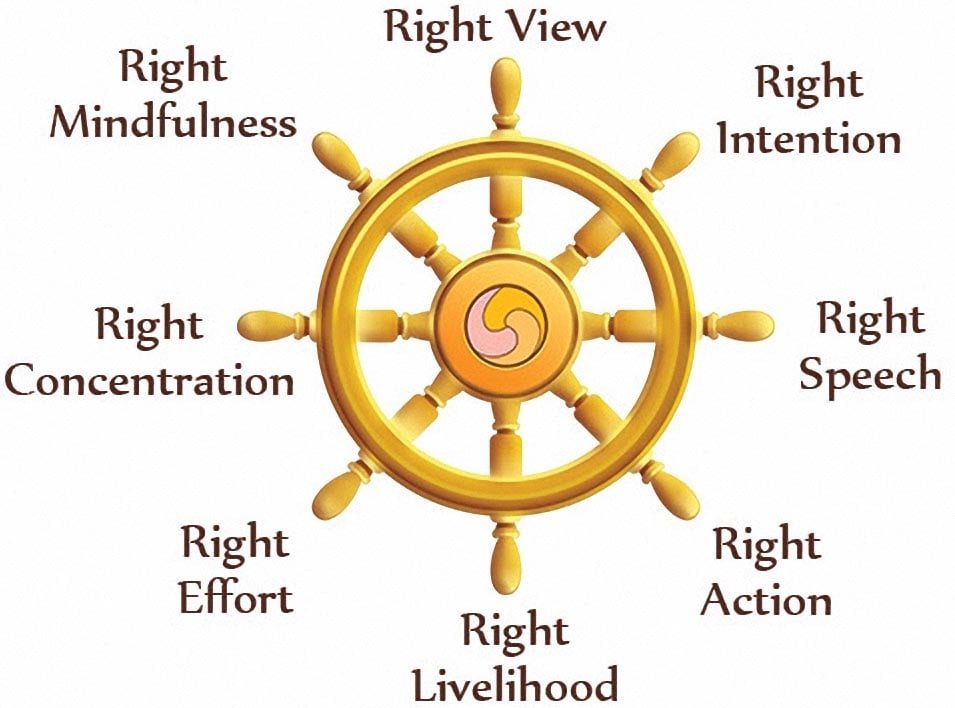
6. Right Effort
To do anything in life requires determination, persistence and energy. The sustained, lifelong practice of the Noble Eightfold Path, to lead a pure and spiritual life, is the very definition of Right Effort. Right effort includes developing good habits, such as practicing right mindfulness, right meditation and other positive moral acts in your daily life — not just occasionally.
7. Right Mindfulness

The practice of Right Mindfulness, in particular, requires Right Effort. It is the constant watching / observation of your own body and actions, feelings, thoughts and mental objects (your imagination / images in your mind).
This self-observation is useful in two major ways:
- It complements Vipassana (Insight) Meditation. As a subset to insight, it helps you gain better understanding of yourself, the ever-changing (impermanent) nature of your own mind and body.
- It enables you to check any subconscious or careless mental / verbal / physical actions that are negative or bad.
Anapanasati, mindfulness of breath, helps cultivate the seven factors of awakening as defined the Anapanasati Sutta:
- sati (mindfulness)
- dhamma vicaya (analysis)
- viriya (persistence)
- piti (rapture)
- passadhi (serenity)
- samadhi (concentration)
- upekkha (equanimity)
- For more on this topic, see this teaching from Ven. Zasep Rinpoche>>
There are also subsets, such as the “mindfulness of feelings” which can help one overcome afflictive emotions such as anger. (See this story on Mindfulness of Feelings, Mahamudra Teachings)
8. Right Meditation
Simply put, Right Meditation is deep concentration or total focus. The purpose is to train your mind to obey you and not the other way round.
When you start practicing meditation, you will be shocked that your mind controls you, and how unruly it is, like a three-year child. (Sometimes we call it “monkey mind” because it won’t settle.) All sorts of thoughts will go and on in your mind. Initially, it will be like wrestling with a bull, or trying to ride a wild horse without getting thrown off. But, with persistence, strength and determination, you will gradually find it easier and easier to focus your mind. The key is to become the “observer.” Don’t judge what you observe, simply observe such as it is. Stay in the present, mindfully observing.

Once you have succeeded in focusing your mind on a point, you can direct it / wield it, like a laser pointer. So, where do you point your laser-sharp and mirror-clear mind at? The answer is – the Five Aggregates that make up ‘you’. The Five Skandas (Aggregates or ‘heaps’) is a topic of its own, but in brief it is the realization that the Five Skandas entirely constitute sentient existence. The Skandas are: form (‘rupa’ or body), sensations (‘vedana’ or feelings), perceptions (‘samjna’), mental activity (‘sankhara’ or formations), and consciousness (‘vijnana’). These, interestingly, correspond to the Five Buddha Families (yet another feature story in its own right).

Right meditation includes many methods from different paths, all equally valid:
- Mindfulness meditation (Apannasati): sitting, lying, walking, skateboarding, just being mindful all day long. For previous stories on Mindfulness, please see these>>
- Samatha: single-pointed meditation (concentrating single focus on breath, for example), helping to give insight into the transitory nature of reality. For helpful guidance on samatha, see this previous story on Mahamudra, with Venerable Zasep Rinpoche guiding samatha>>
- Vipassana: seeing things as they really are, or discerning “formations” (conditioned phenomena based on the five aggregates)
- Panna (in Pali), Prajna (in Sanskrit): wisdom meditation: advanced meditations on reason, wisdom, insight, knowledge, recognition.
- Metta Meditation: meditating on loving kindness for all beings.
- Analytical meditation: where is this “I” — a specific form of Vipassana and also a subset of Panna meditation
- Visualization meditation: traditionally advanced Enlightened being or deity visualizations in Vajrayana: these guided meditations (in the sense that you typically recite the visualization) take the meditator through the full path, generation, completion, understanding shunyata through “rehearsal” style drama that ultimately bring insight and realizations. For one of our stories on Visualization meditation, see this interesting story where researchers found that Vajrayana visualized meditation is good for people with cognitive or memory issues>>
- Mantra meditation: focusing on symbolically sacred sounds (often combined with meditation): can be considered a combination of Samatha (with sound as the focus) and Visualization. Some Buddhist include an element of faith in the use of mantra (or prayer) which can empower the sound. There is even some evidence mantra can have some effect even if there is no faith (See this story, “The Science of Mantras”>>).
There are many more. All of these methods, taught by our precious teachers, are designed to bring us — we, ourselves — to our own realizations, our own ultimate Enlightenment for the benefit of all sentient beings.
Samatha, Panna, Vipassana
As we follow the eightfold path, we try to focus on Samatha, Panna, Vipassana. Here’s how it might look in simplified form (in a perfect practice):
At a future time, when your body and mind are pure in conduct (Morality), and your mind is entirely focused and concentrated (Samatha), and you come to realize the wisdom (Panna) of the Emptiness of the Five Aggregates, you might have a sudden flash of insight (Vipassana). Then, realizations — or even Enlightenment — becomes possible. Once you achieve all of these things, possibly ………..Nibbana! (Nirvana!)
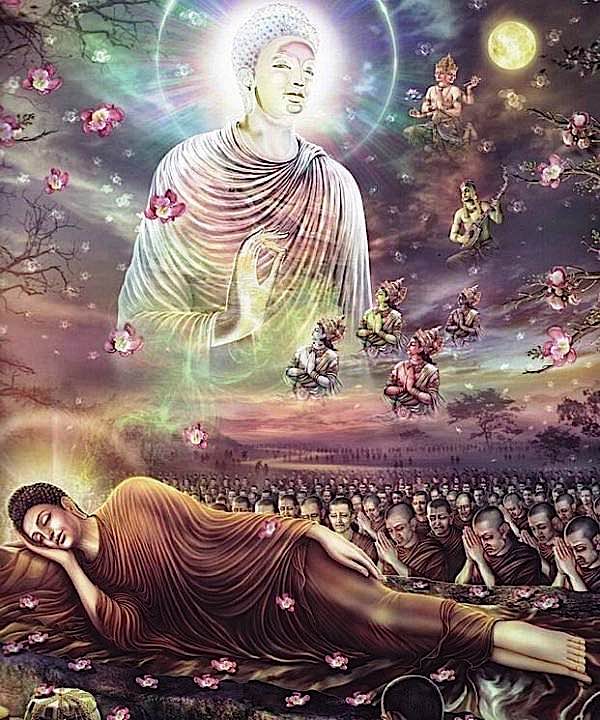
Of course, the actual ‘doing’ is a lot harder than described……
Never-the-less, this is the goal and the journey. Initial knowledge (Wisdom) guide moral conduct (Morality). Purified mind and body through morality assist concentration (Samatha). Using concentration, the Five Aggregates can be analysed thoroughly (Wisdom). Finally, with the realization that the ‘self’ is actually a composition of factors streaming along and intrinsically ‘empty’ – then, the actual breakthrough to Enlightenment (Bodhi) is possible.
Buddha’s First Teaching at Deer Park
These two extremes, monks, are not to be practiced
by one who has gone forth from the world.
What are the two?
That joined with the passions and luxury—
low, vulgar, common, ignoble, and useless,
and that joined with self-torture—
painful, ignoble, and useless.
Avoiding these two extremes the one who has thus come
has gained the enlightenment of the middle path,
which produces insight and knowledge,
and leads to peace, wisdom, enlightenment, and nirvana.
And what, monks, is the middle path, by which
the one who has thus come has gained enlightenment,
which produces knowledge and insight,
and leads to peace, wisdom, enlightenment, and nirvana?
This is the noble eightfold way, namely,
right understanding, right intention,
right speech, right action, right livelihood,
right attention, right concentration,
and right meditation.
This, monks, is the middle path, by which
the one who has thus come has gained enlightenment,
which produces insight and knowledge,
and leads to peace, wisdom, enlightenment, and nirvana.
Now this, monks, is the noble truth of pain:
birth is painful; old age is painful;
sickness is painful; death is painful;
sorrow, lamentation, dejection, and despair are painful.
Contact with unpleasant things is painful;
not getting what one wishes is painful.
In short the five groups of grasping are painful.
Now this, monks, is the noble truth of the cause of pain:
the craving, which leads to rebirth,
combined with pleasure and lust,
finding pleasure here and there,
namely the craving for passion,
the craving for existence,
and the craving for non-existence.
Now this, monks, is the noble truth
of the cessation of pain:
the cessation without a remainder of craving,
the abandonment, forsaking, release, and non-attachment.
Now this, monks, is the noble truth
of the way that leads to the cessation of pain:
this is the noble eightfold way, namely,
correct understanding, correct intention,
correct speech, correct action, correct livelihood,
correct attention, correct concentration,
and correct meditation.
“This is the noble truth of pain”:
Thus, monks, among doctrines unheard before,
in me insight, wisdom, knowledge, and light arose.
“This noble truth of pain must be comprehended.”
Thus, monks, among doctrines unheard before,
in me insight, wisdom, knowledge, and light arose.
“It has been comprehended.”
Thus, monks, among doctrines unheard before,
in me insight, wisdom, knowledge, and light arose.
“This is the noble truth of the cause of pain”:
Thus, monks, among doctrines unheard before,
in me insight, wisdom, knowledge, and light arose.
“The cause of pain must be abandoned.”
Thus, monks, among doctrines unheard before,
in me insight, wisdom, knowledge, and light arose.
“It has been abandoned.”
Thus, monks, among doctrines unheard before,
in me insight, wisdom, knowledge, and light arose.
“This is the noble truth of the cessation of pain”:
Thus, monks, among doctrines unheard before,
in me insight, wisdom, knowledge, and light arose.
“The cessation of pain must be realized.”
Thus, monks, among doctrines unheard before,
in me insight, wisdom, knowledge, and light arose.
“It has been realized.”
Thus, monks, among doctrines unheard before,
in me insight, wisdom, knowledge, and light arose.
“This is the noble truth
of the way that leads to the cessation of pain”:
Thus, monks, among doctrines unheard before,
in me insight, wisdom, knowledge, and light arose.
“The way must be practiced.”
Thus, monks, among doctrines unheard before,
in me insight, wisdom, knowledge, and light arose.
“It has been practiced.”
Thus, monks, among doctrines unheard before,
in me insight, wisdom, knowledge, and light arose.
As long as in these four noble truths
my due knowledge and insight
with the three sections and twelve divisions
was not well purified, even so long, monks,
in the world with its gods, Mara, Brahma,
its beings with ascetics, priests, gods, and men,
I had not attained the highest complete enlightenment.
This I recognized.
And when, monks, in these four noble truths
my due knowledge and insight
with its three sections and twelve divisions
was well purified, then monks,
in the world with its gods, Mara, Brahma,
its beings with ascetics, priests, gods, and men,
I had attained the highest complete enlightenment.
This I recognized.
Knowledge arose in me;
insight arose that the release of my mind is unshakable:
this is my last existence;
now there is no rebirth.
NOTES
[1] The Vision of the Buddha: The Path to Spiritual Enlightenment, by Tom Lowenstein.
6 thoughts on “8 Rights: The Noble Eightfold Path — the Heart of the Buddha’s Teaching”
Leave a Comment
More articles by this author
Search
Latest Features
Please support the "Spread the Dharma" mission as one of our heroic Dharma Supporting Members, or with a one-time donation.
Please Help Support the “Spread the Dharma” Mission!

Be a part of the noble mission as a supporting member or a patron, or a volunteer contributor of content.
The power of Dharma to help sentient beings, in part, lies in ensuring access to Buddha’s precious Dharma — the mission of Buddha Weekly. We can’t do it without you!
A non-profit association since 2007, Buddha Weekly published many feature articles, videos, and, podcasts. Please consider supporting the mission to preserve and “Spread the Dharma." Your support as either a patron or a supporting member helps defray the high costs of producing quality Dharma content. Thank you! Learn more here, or become one of our super karma heroes on Patreon.
Bhodi Anjo Daishin
Author | Buddha Weekly
Concentration, meditation, mental development. Developing one's mind is the path to wisdom which in turn leads to personal freedom. Mental development also strengthens and controls our mind; this helps us maintain good conduct.
I was a university administrator involved in international education. I also am a very successful local musician in Western New York. In that "other" world I am Gregg Sansone... As I have gotten older my path has led me to some wonderful places and to the awesome point I am at right now. The people in my life are gifts and I can truly say that I am grateful for all that is present in my life. I see so much with Buddhist practice that my open eyes, in turn, open my heart and soul...Too flowery? That's okay too...We all have our own path to walk.
I am just doing my part to live a peaceful life as a Buddhist Italian-American in Buffalo, New York of all places! Just doing my part to live a peaceful life as a Buddhist Italian American in Buffalo, NY of all places! I am a Buddhist who follows in the tradition of Buddhist nun Pema Chodron, Vietnamese Zen Master Thich Nhat Hanh and the Karma Kagyu lineage of Tibetan Buddhism, but I enjoy teachings from all Buddhist traditions. I have been to many countries witnessing Buddhism and mindful practices. I continue to learn and follow a life that incorporates the Five Precepts and Zazen. This site is a great place for me to share elements of life that I come across in books, film and certainly on the Internet. I state my opinion and try to be open to everything. We all have our own path and, in some way, I hope I can add to your life and you can add to mine. I act out of generosity, loving kindness and, hopefully, wisdom. Namaste!






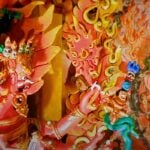







“The actual doing is a lot harder than described :)” That’s probably the greatest truism, period. We spend our lives trying, only to find out the doing is harder than we expected. At it’s most basic, it does seem simple, clear, and correct. Day to day, that basic logic falls away when set against the stress of daily living. Never more so was the eight-fold path more meaningful than today, in this stressful world. Thanks for posting.
Theoretical knowledge of Dhamma is wonderful. It is like solid foundation. As for a grand building a solid foundation is must. But we do not construct, leave the foundation as it is, It looks ugly, haunted, ghostly. We must construct on it concurrently. Practice of Dhamma makes the theoretical knowledge useful, enduring and marvelous. Dhammavani-the vipassana radio is a mean to strengthen practice, taking Pariyatti to its logical goal,Patipatti which ultimately takes one to Vimutti passing through Pativadhan
So, is it “right?”
Pingback: Is there room for the supernatural in Western Buddhism? Four sutra views of magic and metaphysical and why a supernatural perspective helps "see beyond ordinary perception" - Buddha Weekly: Buddhist Practices, Mindfulness, Meditation
Would like more examples about RIGHT THOUGHT AND RIGHT UNDERSTANDING
NUMBER 8 IS VERY IMPORTANT IN NUMBER SYSTEM.